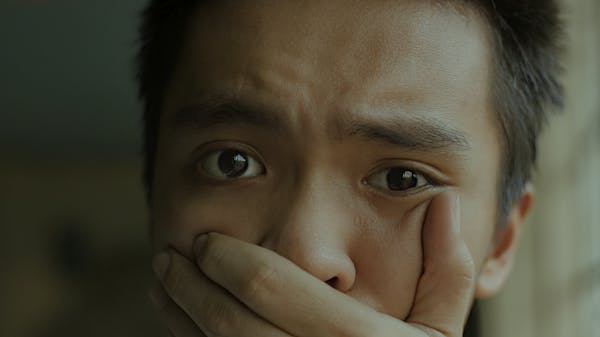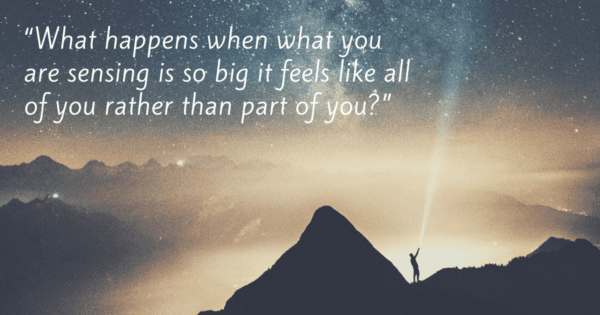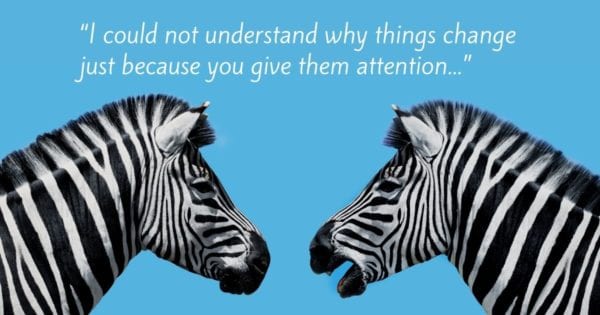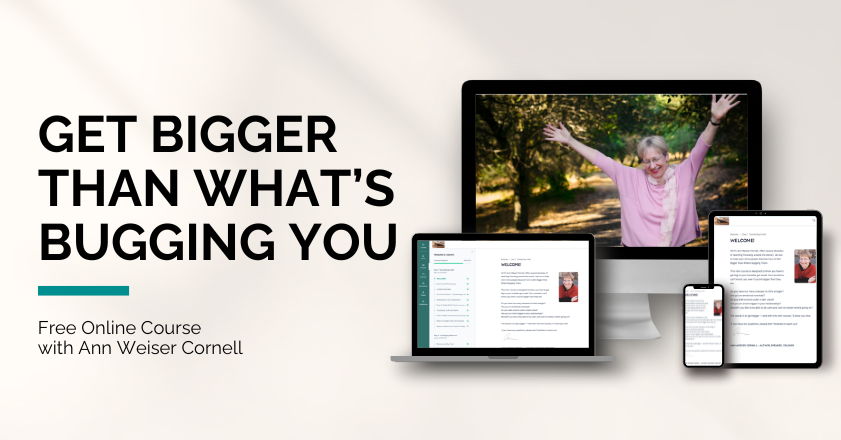Using Focusing at a Planning Meeting
~~~~~~~~~~~~~~~~~~~~~~~~~~~~~~~~~~~~~~~~~~
I know many of you are interested in how to use Focusing in the midst of life, and I came across a wonderful example recently.
John Murray of Saskatoon, Saskatchewan, is involved in forest renewal and other ecologically aware activities. As such, he was invited to participate in a planning process for a "green" housing development project.
In John’s own words: "As part of the process I was put in a group of eight people who were asked to very quickly identify some characteristics of the future building that we considered most important. These characteristics would then be used as details by the design team to help in creating the most appropriate building. We had three lists of about ten characteristics to clarify and then prioritize. We were asked to add items to the list, if we thought there were important characteristics missing.
"I found myself somewhat overwhelmed with so much information and quite a bit of time pressure. So I decided to focus. And guess what. I had a vague sense that something was missing. I think I was already having this sense but just not paying attention to it.
"As I paid attention to the sense of something being missing, the word ‘safe’ came to mind. I looked at all the lists and the work ‘safe’ was not on any of them. So I put up my hand and suggested that we add ‘safe’ to the list. As soon as I said the word about five people responded positively, nodding heads, saying yes, and so on.
"I felt very good about this. Our group went on to put the word ‘safe’ as an important characteristic on our master list and give it a high priority. And of course it is a very important part of a living situation."
Isn’t this great? Here’s what I love about John’s story, which he graciously gave permission for me to share with you. The Focusing doesn’t take a long time — I doubt if anyone else even knew he was doing it! He was able to pause — pausing is key — and notice a vague sense that might have been there for some time. Something was missing… something was not quite right…
And then when he articulated what was missing, it really fit for the group! It brought the whole project a step forward. And I think we’ll find this almost always, that when we pause and get a sense like this, it fits not only for we ourselves, but for the whole situation, and the other people involved recognize it as what was missing too. Focusing isn’t a selfish, self-absorbed activity; Focusing is sensing what is missing or needed in the whole situation. Quite often that feels right to everyone involved.
Pausing Is the Key
~~~~~~~~~~~~~~~~~~~~~~~~~~~~~~~~~~~~~~~~~~
The big little step that allows Focusing to enter into everyday life is pausing. I learned this from Mary Hendricks Gendlin, the head of the Focusing Institute, who calls it "the revolutionary pause." (And she’s written an article about it–it’s great!)
Mary calls pausing "stopping the situation so I can get a sense of it." Without pausing, we go on in a routine, carried along by what is expected. When we pause, and let a felt sense come, the whole world changes! We’re no longer bound by custom, routine, or expectation. Something truly creative can happen, something more attuned to the needs of the moment and all the people than simply following the rules. This is why Mary calls this pause "revolutionary."
Mary suggests asking for a pause by saying things like, "Wait, I need a moment," or "Let me have a moment to take that in."
Or you can do as John did, and take the time when everyone else is thinking, and do some Focusing. Not instead of thinking, but in addition. The Focusing will make you smarter, because you’ll be including more information in what you’re working on.
I’m inspired by John’s story to look for even more Focusing moments in my daily life.






